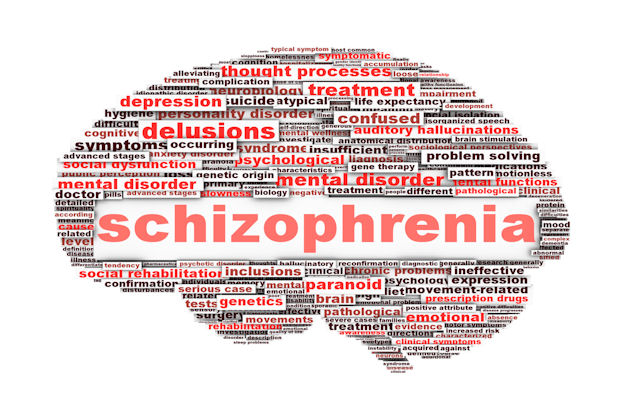Paper 2 -June 2021 -Psychology AQA A-Level -MODEL ANSWERS
APPROACHES
1.) Outline the way in which Pavlov studied classical conditioning.
Model Answer
Pavlov investigated classical conditioning by conducting experiments on dogs, primarily focusing on the salivation reflex. He introduced the unconditioned stimulus (food) to evoke the unconditioned response (salivation) in the dogs. To establish conditioned responses, Pavlov paired a neutral stimulus, which initially did not elicit a response, with the unconditioned stimulus. Over time, the neutral stimulus became a conditioned stimulus capable of triggering a conditioned response, demonstrating the concept of learning by association. Pavlov's work emphasized the importance of temporal association or contiguity in forming these conditioned responses through the repeated pairing of stimuli.
2.) Some critics have said that Pavlov’s studies may lack ecological validity.
What is meant by the term ecological validity? ( 2 marks)
Model Answer
Critics argue that Pavlov's studies may lack ecological validity, meaning that the behaviours observed and recorded in his experiments may not fully reflect the behaviours occurring in the real world. This suggests a potential limitation in generalizing the findings to real-life situations due to the controlled and artificial nature of laboratory settings.
3.) Jemima and Lily are identical twins. Lily complains to Jemima, “I don’t understand it. If we have the same genes, how come you have clearer skin than me and are much better at netball?”
Jemima laughs and replies, “Lily, we may be identical twins, but we are not identical people.”
Using your knowledge of genotype and phenotype, explain Lily’s and Jemima’s comments. ( 4 marks)
Model Answer
Jemima and Lily's identical genotypes mean they share the same genetic makeup. However, their differing phenotypes result from a combination of genetics and environmental factors. Jemima's proficiency in netball could be influenced by environmental factors such as more practice or earlier lessons. Similarly, Jemima's clearer skin might be attributed to different environmental factors, such as a distinct skincare routine, diet, or sun exposure, demonstrating that while their genes are the same, environmental influences contribute to the observed variations in their characteristics.
4.) Lily and Jemima have a pet rat, which usually hides in a corner when they try to take it out of its cage. They have tried different ways to stop the rat hiding, but so far without success.
Use your knowledge of two types of reinforcement to suggest how Lily and Jemima could train their rat to come to the cage door when they open it.( 4 marks)
Model Answer
Lily and Jemima can use positive reinforcement to train their rat by offering treats like chocolate drops whenever they open the cage door, encouraging the rat to associate coming to the door with a rewarding experience. This will increase the likelihood of the rat repeating the behavior in the future. Alternatively, they could employ negative reinforcement by introducing an unpleasant stimulus like spraying water or playing loud music when the rat hides, stopping the unpleasant stimulus when the rat comes to the door. Over time, this association could motivate the rat to approach the door to avoid the aversive stimulus. Applying schedules of reinforcement, such as consistent rewards for desired behavior, will further enhance the effectiveness of the training process, making the rat more likely to respond consistently to the cue of the cage door opening.
5.) Compare the humanistic approach with the psychodynamic approach. ( 8 marks)
Model Answer
The humanistic approach and the psychodynamic approach differ fundamentally in their perspectives on determinism. Determinism is the philosophical concept that all events, including human actions, are predetermined and inevitable outcomes of antecedent causes, often negating the idea of free will.
For example, the humanistic approach asserts that individuals have free choice over their behavior, suggesting that people are not bound by external forces and have the capacity to make conscious decisions. In contrast, the psychodynamic approach leans towards determinism, positing that behavior is influenced by unconscious factors beyond conscious control.
Another distinction lies in the nature/nurture debate. The nature vs nurture debate is the longstanding inquiry into the relative contributions of genetic factors (nature) and environmental influences (nurture) in shaping an individual's traits, behaviors, and development.
For example, the humanistic approach contends that behaviour is shaped by the innate drive for self-actualisation (nature), but it also recognises the impact of environmental factors such as conditions of worth and conditional positive regard (nurture) in hindering or facilitating this process. Conversely, the psychodynamic approach posits that behaviour is rooted in the interplay of inherent forces like the id, ego, and superego (nature), yet it acknowledges the role of experiences in shaping coping mechanisms and defense mechanisms (nurture).
The humanistic approach appears more useful as it emphasises individuals' free choice over their behaviour, allowing for a focus on conscious decisions and personal agency, while the psychodynamic approach, leaning towards determinism, may limit the exploration of free will by emphasizing unconscious influences on behavior. Additionally, the humanistic approach, by recognising the interplay of both nature and nurture factors in shaping behavior, provides a more comprehensive perspective, considering both innate drives and environmental influences, compared to the psychodynamic approach's primary emphasis on unconscious forces and experiences.
BIOPSYCHOLOGY
1.) Describe the structure and function of a neuron.( 6 marks)
Model Answer
A neuron, the fundamental unit of the nervous system facilitating communication, consists of various components with distinct functions. The cell body, or soma, contains genetic material crucial for the neuron's structure and function. Extending from the cell body are dendrites, branch-like structures often adorned with dendritic spines, which carry functional information towards the cell body. Dendrites play a pivotal role in receiving information from other neurons, forming a network of interconnected communication. Axons, on the other hand, carry messages away from the cell body and can be myelinated, enhancing the speed of nerve transmission through saltatory conduction between nodes of Ranvier.
At the end of axons are terminal boutons, which establish synaptic connections with other cells, allowing for the transmission of signals between neurons. Within these axon terminals are neurotransmitters, chemical messengers that facilitate communication between neurons and other cells. In summary, the structure of a neuron encompasses the cell body, dendrites, axons, and terminal boutons, while its function involves the reception, transmission, and communication of information within the intricate neural network.
2.) Studies have identified Broca’s area and Wernicke’s area as responsible for language.
Outline the difference in function between Broca’s area and Wernicke’s area. (2 marks)
Model Answer
Broca's area is primarily responsible for speech production, ensuring fluency in verbal expression, while Wernicke's area is responsible for language comprehension, allowing speech to be meaningful by processing and understanding linguistic information. In essence, Broca's area focuses on the production of fluent speech, while Wernicke's area contributes to the comprehension and meaningfulness of language.
3.) Discuss ways of studying the brain. ( 16 marks)
Model Answer
Various techniques are employed to study the brain, each offering unique insights into its structure and function. Post-mortem examinations, for instance, involve scrutinising the brain's structure after death to correlate any abnormalities with observed behavioural changes during the individual's lifetime. Electroencephalograms (EEGs) and event-related potentials (ERPs) involve electrodes placed on the scalp to detect neuronal activity.
ERPs, derived from EEGs, focus on specific stimuli-induced neuronal responses, offering valuable insights into cognitive processes. Functional magnetic resonance imaging (fMRI) is a powerful method utilising magnetic fields and radio waves to visualise dynamic changes in blood oxygenation and flow, offering superior spatial resolution.
One strength of fMRI is its exceptional spatial resolution, allowing researchers to precisely locate neural activity within the brain. This high spatial resolution is particularly advantageous in identifying specific brain regions involved in various cognitive processes or responses to stimuli. For instance, fMRI studies have successfully mapped activity in the visual cortex during visual perception tasks, providing detailed insights into the neural mechanisms underlying vision. This ability to pinpoint activity with precision enhances the validity of the findings, contributing valuable information to our understanding of the brain's functional organisation.
On the other hand, a notable limitation of fMRI lies in its low temporal resolution. Unlike techniques such as EEG, which can capture rapid changes in neuronal activity, fMRI provides a slower, averaged measure of brain activity over several seconds. This limitation becomes apparent in studies aiming to explore the timing of cognitive processes or the sequence of neural events. For instance, when investigating the rapid succession of neural events during decision-making, fMRI may not capture the nuanced temporal dynamics as effectively as methods with higher temporal resolution. Consequently, the choice of fMRI should consider the trade-off between spatial and temporal resolution based on the specific research questions at hand, highlighting the need for a careful balance in selecting brain imaging techniques.
Post-mortem studies, on the other hand, excel in providing detailed structural information about the brain, enabling researchers to examine abnormalities and correlate them with observed behavioral changes. This approach allows for an in-depth exploration of deeper brain regions not easily accessible through non-invasive techniques like fMRI or EEG. However, the inability to study the brain in vivo limits insights into dynamic processes and the functional aspects of the brain, underscoring the complementary nature of different techniques in advancing our understanding of the complexities of neural functioning.
RESEARCH METHODS
A researcher placed an advert in a university psychology department asking for third year students to participate in a sleep experiment.
Each student had a sleep tracker watch to wear at home for the two-week study. Each morning they were asked to open the sleep tracker app to view their sleep quality data on their mobile phones. The students were unaware that the sleep data they could see on their phones had been manipulated by the researcher. Over the two weeks of the study, each student saw that he or she had had poor sleep quality for seven random nights of the experiment and good sleep quality for the remaining nights.
Every morning, after viewing the sleep data, each student completed a questionnaire about the previous night’s sleep. One of the questions asked the students to rate how well rested they felt, on a scale from 1–10, after the previous night’s sleep. Apart from this, students were asked to continue their normal everyday activities.
(1a) Which of the following best describes the experimental method used in this study? ( 1 mark)

Model Answer
A – Field experiment
(1b) Write a directional hypothesis the researcher might use for this study. ( 3 marks)
Model Answer
Students exposed to good sleep data will report feeling more well-rested compared to those exposed to poor sleep data.
(1c) Which of the following best describes the sampling method used in this study?
Shade one box only.( 1 mark)

Model Answer
D – Volunteer sampling
(1d) Explain one strength and one limitation of using this sampling method in this study.( 4 marks)
Model Answer
One strength of using a volunteer sampling method in this study is that it increases the likelihood of participant cooperation and completion of the daily sleep questionnaire, as individuals who volunteer are likely to be more willing and motivated to participate.
However, a notable limitation is the potential for sample bias, where the traits and characteristics of the volunteering students may differ from the broader population. For instance, the sample may be skewed towards more extroverted individuals, impacting the generalisability of the study's findings to the entire student population.
The researcher collected quantitative data about how well rested the students felt.
(1e) Explain one strength of collecting quantitative data in this study.( 2 marks)
Model Answer
One strength of collecting quantitative data in this study is that it would facilitate easy and efficient analysis of the sleep data. The numerical nature of quantitative data allows for statistical analysis, enabling the researcher to identify patterns, trends, and relationships in the well-restedness ratings of students with greater precision and clarity.
One ethical issue in this study is deception, as the students were unaware that the sleep data they could see on their phones had been manipulated by the researcher.
(1f) Explain one way in which the researcher might deal with the deception in this study. ( 2 marks)
Model Answer
One way the researcher might address the deception in this study is by conducting a thorough debrief at the end, where students are informed about the manipulation of the sleep data and the true nature of the study. Providing a full debrief is an ethical practice that ensures participants are made aware of the deception, allowing them the opportunity to understand the purpose of the study and addressing any potential concerns or discomfort caused by the manipulation.
Apart from the question about how well rested the students felt, the researcher’s questionnaire contained nine other questions. The responses to these questions were not analysed.
(1g) Explain one reason why the researcher decided to include these additional questions on the questionnaire. ( 2 marks)
Model Answer
One reason the researcher decided to include additional questions on the questionnaire, apart from the one about how well-rested the students felt, was to reduce demand characteristics. By including unrelated questions, students would be less likely to alter their ratings about their sleep quality, enhancing the validity of the study by minimising the potential impact of participants guessing the study's purpose and adjusting their responses accordingly.
(1h) Explain one limitation of assessing sleep quality using a rating scale of 1–10. ( 2 marks)
Model Answer
One limitation of assessing sleep quality using a rating scale of 1–10 is the subjectivity of the measure, as individual interpretations of what constitutes a specific rating may vary. For instance, a rating of 3 might signify different levels of sleep quality for different students, and since the scale lacks qualitative details, students may not be able to explain the nuances behind their ratings.
The researcher believed that the actual number of hours slept by the students could have affected the results of the study.
(1i) Suggest one other extraneous variable that could have affected the results of this study. Explain why it would have been important to control this extraneous variable and how it could have been controlled in this study. ( 4 marks)
Model Answer
One extraneous variable that could have affected the results of the study is the delay between waking and responding to the questionnaire. If students experienced delays due to phone battery issues, taking a shower, or other activities before completing the questionnaire, they might feel more awake, potentially paying greater attention to the manipulated sleep data and thereby influencing the impact of the independent variable on the dependent variable. To control this extraneous variable, the researcher could have implemented measures such as asking students to keep their phones on charge overnight, instructing them to complete the questionnaire immediately upon waking, or before getting up, ensuring a more consistent and controlled response context.
A researcher investigated whether there was a correlation between the number of hours slept and how well rested students felt.
The researcher randomly selected 18 participants from first-year students at a university.
On the day of the study, each student participant was asked, ‘How many hours did you sleep last night?’ They then had to rate on a scale of 1 to 5 how well rested they felt.
The researcher hypothesised that there would be a positive correlation between the two co-variables.
(2a) Outline one reason why it was appropriate to conduct a correlation rather than an experiment in this case.( 2 marks)
Model Answer
It was appropriate to conduct a correlation rather than an experiment in this case because it may be more ethical to allow students to sleep naturally without imposing restrictions on their sleeping hours. By investigating the natural correlation between the number of hours slept and how well rested students feel, the study avoids potential ethical concerns associated with manipulating or limiting participants' sleep duration.
(2b) Describe how the researcher could have used random sampling to obtain the students for this study.( 3 marks)
Model Answer
To use random sampling for this study, the researcher could have collected the names of all the first-year students at the university. Subsequently, they could put all the students' names into a hat or use a computer-based random name generator. The researcher would then select names in an unbiased manner, either by drawing from the hat or using the computer-generated list, repeating the process until a sample of 18 students has been selected for the experiment.
The researcher used Spearman’s rho statistical test to analyse the data from this study.
(2c) Explain why Spearman’s rho was a suitable test for this study. Refer to the description of the study in your answer.( 4 marks)
Model Answer
The correlational hypothesis in this study focuses on investigating the relationship between the number of hours slept and how well rested the students feel. The use of an arbitrary scale of 1–5 to assess how well rested the students feel indicates the collection of ordinal data, as it is a subjective and non-universal measure that can be ranked but lacks equal intervals between the scale points.
The researcher chose to use the 5% level of significance and the calculated correlation coefficient for the Spearman’s rho test was 0.395

The calculated value of rho must be greater than or equal to the critical value to be significant.
(2d) Identify the appropriate critical value from the table above. Explain your choice. ( 4 marks)
Model Answer
The appropriate critical value from the table above is 0.401, as identified for a one-tailed test with a significance level of 0.05. The calculated correlation coefficient for the Spearman's rho test was 0.395, which falls below the critical value of 0.401. Since the calculated value is not greater than or equal to the critical value, the result is not statistically significant at the 5% level of significance, suggesting that the observed correlation may occur due to random chance rather than a true relationship between the variables.
(2e) Explain whether the researcher’s hypothesis should be accepted. Refer to the critical value identified in part (d) in your answer. ( 2 marks)
Model Answer
The researcher's hypothesis should not be accepted as the result is not statistically significant, given that the calculated value of rho (0.395) is less than the critical value (0.401) identified in part (d). The observed correlation falls below the established threshold, indicating that the relationship between the number of hours slept and how well rested students feel is not statistically significant at the chosen 5% level of significance.
(2f) Explain why the researcher decided to use the 5% level of significance rather than the 1% level in this study.( 2 marks)
Model Answer
The researcher chose to use the 5% level of significance rather than the 1% level because the 5% level is the conventional probability threshold employed by psychologists, providing a balanced approach to minimise both Type I and Type II errors. Additionally, since the study investigates the relationship between the number of hours slept and how well rested participants feel, and is not a sensitive or health-related topic, the lower risk associated with the 5% level is deemed appropriate for this particular research context.
When the researcher compared the calculated and critical values of rho, he began to wonder if he might have made a Type II error.
(2g) Explain what is meant by a Type II error in the context of this study.
Model Answer
In the context of this study, a Type II error would occur if the researcher mistakenly accepts the null hypothesis, concluding that there is no correlation between the number of hours slept and how well rested participants feel, even though the alternative hypothesis suggesting a correlation is actually correct. Essentially, it involves failing to detect a true relationship between the variables under investigation.
3.) Discuss features of science. Refer to one or more examples of psychological research in your answer.( 8 marks)
Model Answer
The elements of scientific inquiry are essential components that uphold the trustworthiness and dependability of psychological research. Objectivity, or the unbiased and impartial approach in data collection and interpretation, is crucial. This involves researchers employing the empirical method. This is a systematic and unbiased observation to gather data, ensuring that interpretations are rooted in observable evidence rather than subjective biases. Moreover, replicability, the capability of a study to produce consistent results when repeated, and falsifiability, the potential to be proven false through empirical observation, collectively strengthen the scientific rigor of psychological studies. Replicable findings bolster confidence in research outcomes, while the ability to falsify hypotheses contributes to a robust and accountable scientific approach.
When comparing psychological approaches, Freud's psychodynamic theory faces criticism for its lack of falsifiability and empirical verification. Unfalsifiability implies that Freud's theories cannot be proven wrong through empirical testing, as they often involve concepts that are difficult to measure or observe objectively. Additionally, the absence of empirical verification suggests that Freud's theories are not consistently supported by observable evidence or experimental data.
In contrast, behaviorism takes a more scientific stance by prioritizing observable behaviors and measurable outcomes. This approach emphasises the importance of studying behaviors that can be directly observed and measured, contributing to the scientific rigor of the discipline. Behaviourism's commitment to empirical evidence and measurable outcomes stands in contrast to the more abstract and challenging-to-test nature of Freud's psychodynamic theories, highlighting the diversity in scientific approaches within psychology.











